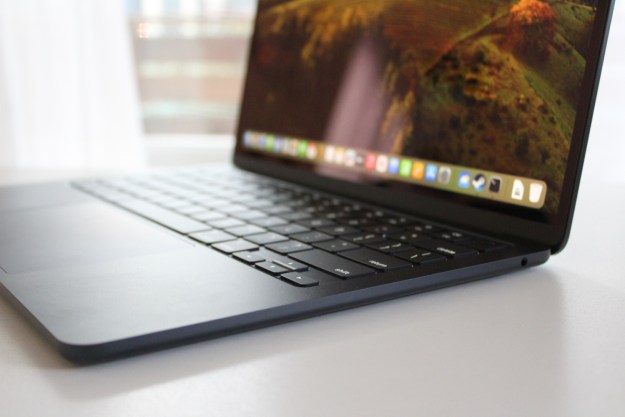
The MacBook Pro has been neglected for nearly two years, lost in the wild while its competitors ride roughshod over its once proud domain. Budget competitors are building premium machines with quality that rivals Apple’s best, performance is skyrocketing, and prices are plummeting. The MacBook Pro returns, this month, to a changed and nearly unrecognizable market.
How can it possibly stay competitive?
Enemies at the gates
What’s so different about this year, this product cycle? Well, if you look at the laptop market when the last MacBook Pro debuted, in May 2015, you can see the beginnings of a trend toward uniformly premium build quality.
The MacBook Pro has been missing for nearly two years, lost in the wild while its competitors ride roughshod over its once proud domain.
Apple adherents have found it difficult to sneer at the latest products released by competitors. They no longer feature cheap plastic construction, creaky hinges, and faded plastic screens. In fact, the latest Windows laptops are thinner and lighter than similar Apple hardware.
Dell, Acer, Asus, and Lenovo have polished their steel, and brought high-end metal-and-glass laptops to eager consumers. Meanwhile, out on the fringes of the laptop market, innovative, if niche, offerings like the Microsoft Surface Book and Lenovo Yoga Book claim a growing slice of market share.
Year over year, Apple’s MacBook sales have trended upward, but this past year sales hit their lowest point since 2013. The announcement later this month comes at a crucial time, and it will determine just how much of that market share the MacBook can claw back from its competitors.
Faster, better, stronger
Performance is going to be the name of the game for the latest MacBooks. They’ve lagged so far behind that Apple’s prices have become, frankly, absurd. What a customer can get for $1,800 from Apple pales in comparison to what that same customer can get from Dell, Asus, Acer, Lenovo, or Microsoft for a couple hundred bucks less.
Sure there’s always been an “Apple Tax,” but the distance between what you get from Apple and what you could get elsewhere has always been just small enough to justify the extra cost. Until now, the hardware has never been generations behind the competition.

Step one to remaining competitive is to crank up that performance with, at a bare minimum, 6th-generation Skylake processors across the board, and maybe even a couple 7th-generation Kaby Lake processors for the dual-core MacBook offerings – the quad-cores are still just on the horizon. RAM will likely get a bump, and so will storage space, but it’s the CPU and GPU that are in dire need of some attention.
If this kind of gap between hardware updates is what we can expect in the future, Apple really needs to push the envelope to keep supporters happy a few years down the line.
Stepping up the hardware is one way to stay relevant as competitors close ranks and storm the gates, but there’s another way to do it – and it’s not without risk.
Touching up the MacBook Pro
The latest leaks paint a pretty clear picture of what we can expect from the latest MacBook Pro; thinner chassis, USB-C taking over for USB-A, no more MagSafe, and of course the OLED touch bar.
We still don’t know very much about the touch bar, but it represents an unprecedented opportunity for the MacBook lineup. You only have to look at the iPhone to see why. Like a bespoke tuxedo, iOS software is custom-tailored to the iPhone hardware at every level – encryption, user interface, haptics – because they’re designed to complement each other.
Apple might still be the king of the premium laptop market, but competitors have closed the gap.
Apps on the app store aren’t designed for every smartphone, they’re designed for the iPhone, and that’s the way Apple likes it. So it comes as little surprise they’d want to bring a small slice of that integration to the MacBook lineup.
Apple hasn’t been able to bring that kind of hardware/software fusion to its MacBooks in part because it’s almost impossible to integrate so intimately on an open platform like a desktop operating system. That’s where the touch bar comes in.
By building a unique hardware component that is only present on the MacBook, Apple can achieve some small degree of that custom-tailored feel on its flagship laptops, and it’s an interesting prospect. We can expect to see deep integration in MacOS Sierra, support for OS-level applications like Siri, and probably even iTunes or Apple Music. But the real opportunity will be in third-party integration.
If third party developers can get in on the action, that little OLED touch bar could end up being a lot more than a curious footnote for the MacBook lineup. It could be the driving force behind app developers clamoring to get in on the Mac App Store.
Return of the king
Apple has never been one for gimmicks when it comes to the MacBook lineup. Progress has been historically incremental and steady. Over several years and iterations plastic gave way to aluminum, an integrated hinge streamlined the design further, and the trackpad became a smooth pane of finely textured glass.
None of these were sweeping, over-night changes. They were rolled out like clockwork. About every year the MacBook lineup received some new feature, a minor change that built on a legacy of quiet innovation.
Planning major hardware changes to a product that hasn’t seen any serious updates in over a year is a calculated risk, and it speaks to the current state of the laptop market. Worldwide, personal computer sales are down as we rely more and more on our increasingly capable mobile devices. Competition is fierce for every laptop manufacturer, and Apple knows it.
So can the new MacBooks coming later this month keep Apple competitive? In all honesty, yes. Apple still has serious brand capital and loyalty. Pair those factors with a major hardware update, along with a shiny new thing that nobody else has, and it’s safe to say Apple’s competitors are in for one hell of a fight this holiday season.
Editors' Recommendations
- These 6 tweaks take MacBooks from great to nearly perfect
- If you buy one MacBook Air alternative, make it this one
- The case for buying the M2 MacBook Air over the M3 model
- Which color MacBook should you buy? Here’s how to pick
- Why you should buy a MacBook Air instead of a MacBook Pro






